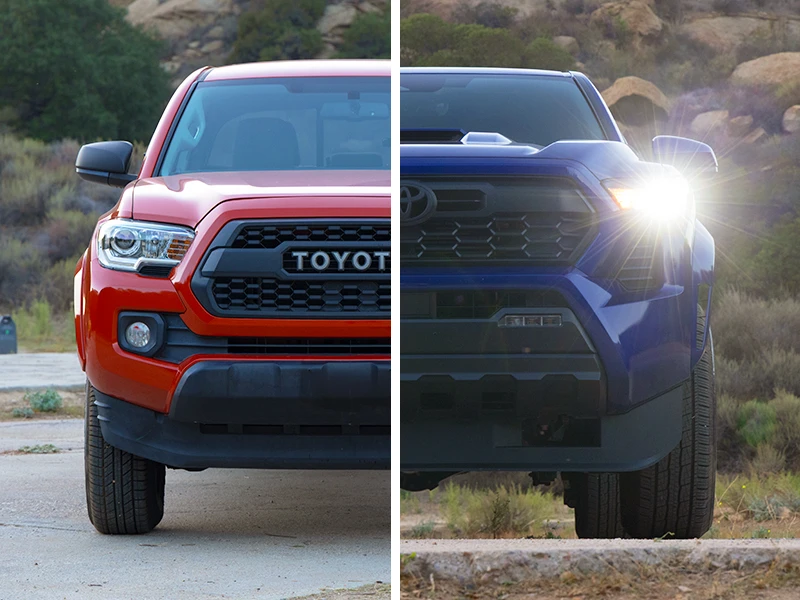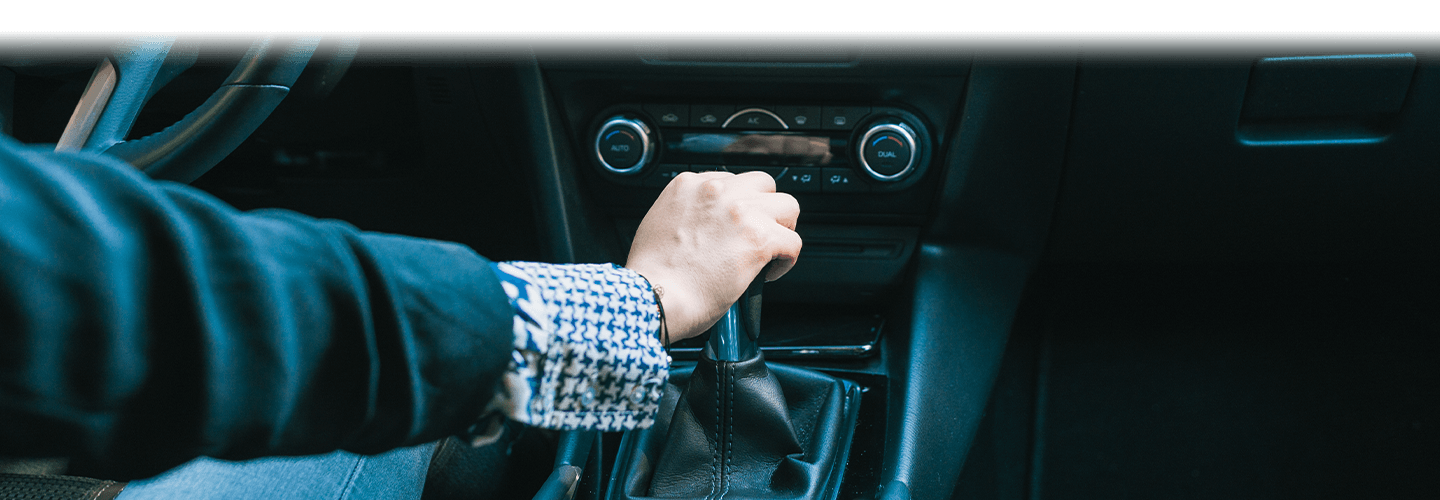
With thousands of vehicles in our inventory, we’re here to help make car research easier for you. We’ve partnered with car-review experts from Edmunds to weigh in on what matters most when you’re looking to buy a truck or car.
***
The secret to driving stick is simple: practice.
Manual transmissions may be slowly disappearing from the new car market, but you'll still find plenty of vehicles with a stick shift when searching used models. In fact some cars, such as the Honda Civic Si, only come with a manual transmission. Many people enjoy the control a manual gives them, especially on fun roads or during winter. If you find your dream used car comes with a manual transmission, don't be discouraged. Instead, take it as an opportunity to discover how fun, engaging, and even fuel-saving driving a manual can be.
Driving a manual isn't hard, but there are a few skills to learn. Edmunds' Ryan ZumMallen lays out everything you need to know about driving a manual transmission. Take these tips, check the owner’s manual, and do the important part: Get out there and practice.
Differences between a manual and an automatic transmission
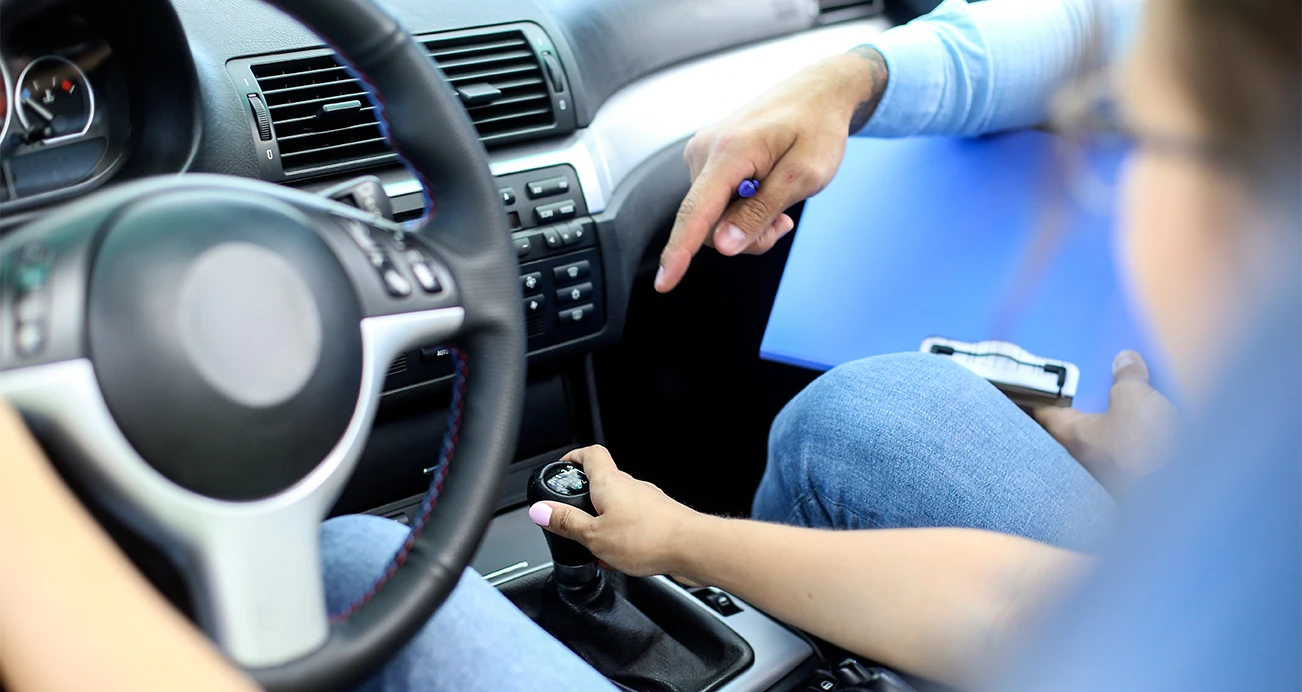
When you sit in the driver's seat of a car with a manual transmission, take note of the gear lever on the center console and the clutch pedal on the floor.
The gear lever will not have the familiar "PRND" for park, reverse, neutral, and drive. Instead, it usually has numbers arranged on top of the handle in an H-like pattern. For a five-speed manual transmission, for example, first gear (note that "gear" and "speed" mean the same thing in this case) will typically be in the upper left, with second gear immediately below, third up and slightly to the right, fourth below that, and then fifth at the far top right.
The numbers correspond to the gears you'll manually select as you drive, replacing the D from the familiar automatic transmission selector for driving forward.
Either on the far left or right, you'll see an R for reverse. Reverse gear is a little trickier because automakers differ on where they place it within the shift pattern. If you have trouble engaging reverse, note that many transmissions use a lockout for reverse that requires you to push down on the shift lever or lift a collar at the base of the shift handle.
So where are P and N? On a manual transmission, there is no dedicated park position, so you're going to rely on the parking brake. As for neutral, that's the space in between gears on a manual transmission; think of it as the crossbar on the H.
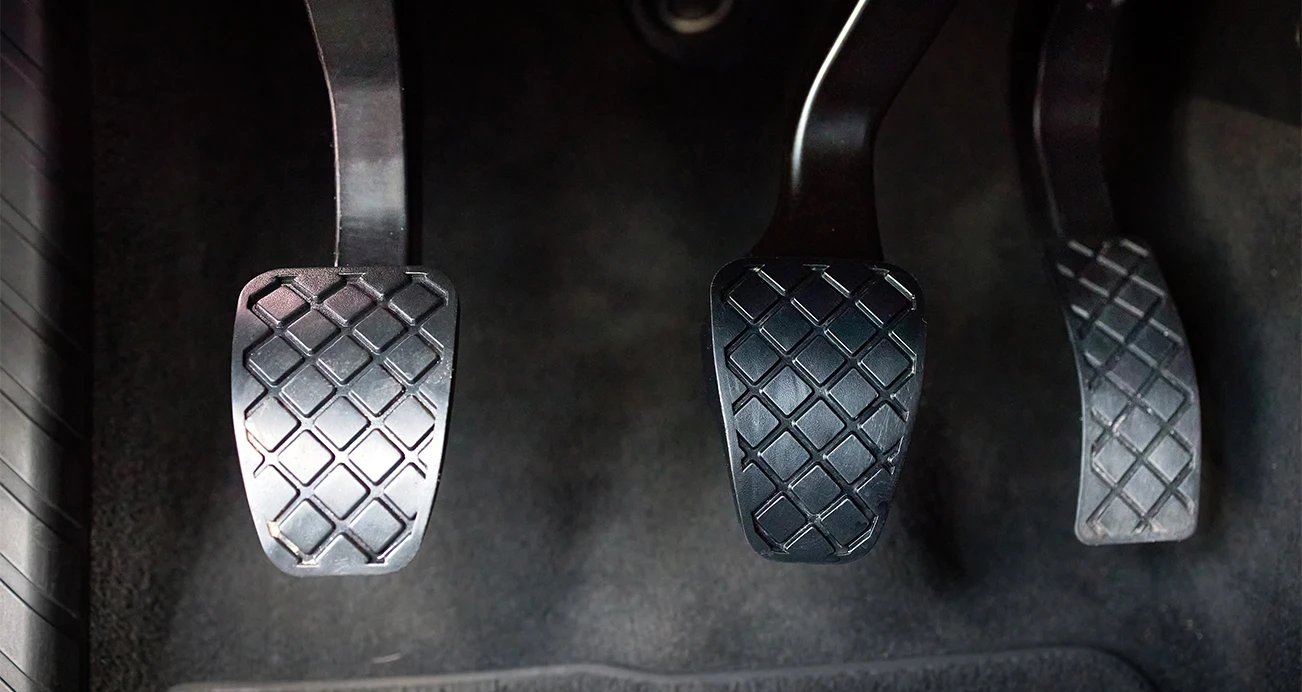
The clutch pedal is the leftmost pedal, with the gas and brake in their usual positions on the right and in the middle, respectively. The gas and brake pedals operate as usual, and the clutch is pressed any time you need to change gears.
Finally, you're going to have a new appreciation for your car's tachometer. This large dial on the dash looks similar to the speedometer and indicates how fast the engine is turning. The engine's idle speed will be a little below the 1,000 rpm mark on most cars, and the highest safe engine speed is marked with a red line.
Make sense? Now let's put it all together.
Ryan's tip: Definitely take a moment upon entering the car just to feel your way around. Take note of exactly where the clutch pedal is, and practice pressing it in and letting it out again. And again. How does the shifter feel in your hand? Press the clutch to the floor, and move the shifter through its gears, familiarizing yourself with where first, second, third, etc., are, along with reverse and the neutral position. Move the driver's seat around to give yourself better access to the pedals and shifter if necessary; you may find that your “sweet spot” driving position will be a bit different. Close your eyes and pretend to go through the motions of driving up to speed. It'll be worth it later on—even if you feel a little silly.
How to start with a manual transmission
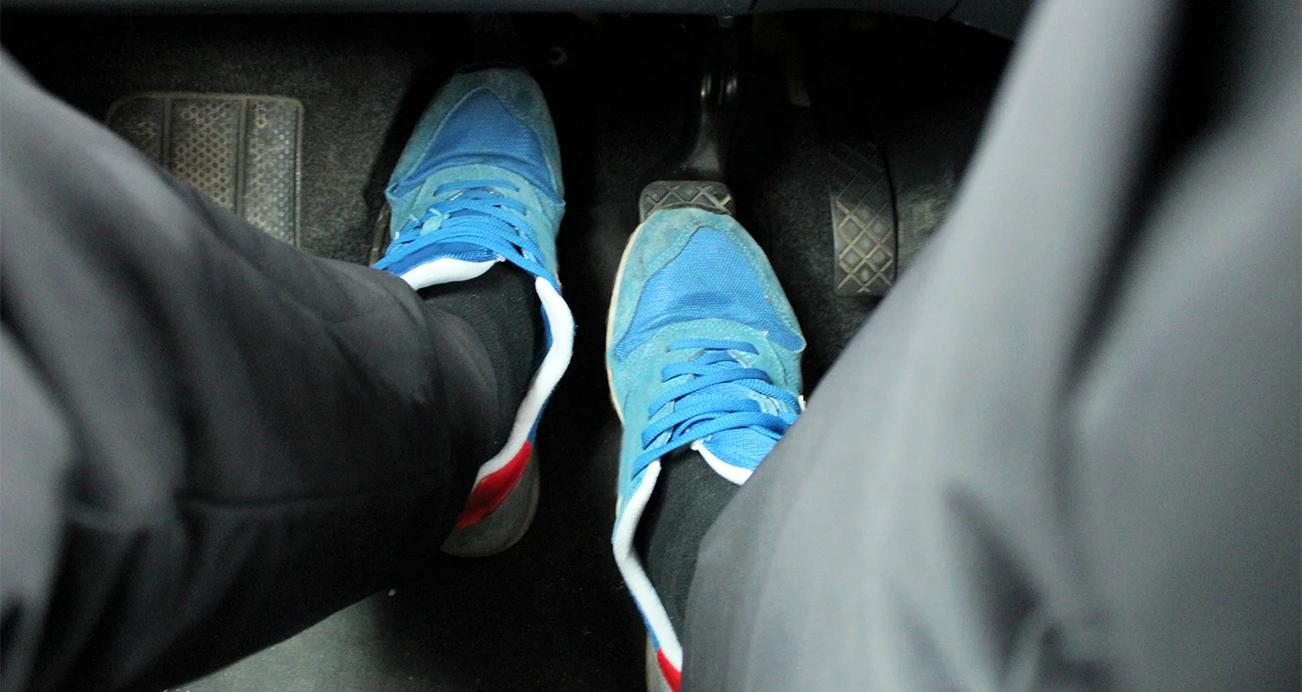
To start a manual-equipped vehicle, first press both the brake and clutch pedals. In fact, modern cars with a manual transmission will require you to press the clutch to start it. With the clutch and brake pressed, turn the key or press the Start button and the engine should come to life. Once the car’s running, take a look at the tachometer and note where the needle is pointing. This is your idle speed, and it's going to be important as you learn to drive a manual.
Now what?
Keep both feet on the brake and clutch for the time being. Grab the shifter, and check to see if it's in neutral, the crossbar on the H we mentioned earlier. If there's a lot of movement when you move the shifter from side to side, you're probably in neutral. To double check, slowly let out the clutch and watch the tachometer. If you hear the engine idle begin to slow, see that the tachometer is dropping below its idle speed, and you feel the car trying to move forward, you're still in gear! Push the clutch pedal back to the floor, and pull the shifter back or push it forward until you feel it come out of gear, and try again.
Once you're in neutral, you can let out the clutch completely without the engine idle changing. As long as you're not moving, leaving the car in neutral or pressing the clutch will keep the vehicle running. If you are fully stopped with your foot on the brake and let the clutch out while the car is in gear, the engine will shut off abruptly, and you'll have to start the vehicle again. This is known as stalling.
Remember that before you head off to release the parking brake. But also remember that because there's no P, if you release the parking brake and the brake pedal while the car is in neutral, it could begin to roll backward or forward even on very gentle slopes.
If it's your first time driving a manual, be sure to start on a very flat surface. You can check this when the car is either in neutral or the clutch pedal is in. Release the brake. If the car stays still, it's flat enough.
Once you're ready to go, press the clutch to the floor and move the stick into first gear. Next, slowly release the clutch. As your foot travels upward, you'll hear the engine idle slow down, the tachometer needle will dip lower than idle, and the car will want to move forward. When you feel this, start adding a little bit of throttle through the gas pedal. Just a small amount, enough to keep the revs steady. The more you let your foot off the clutch, the more throttle you need to add. Soon, you'll see that the car has begun to move forward. Keep letting the clutch out and adding a little more gas. Before you know it, your foot is off the clutch entirely, the car is moving forward, and you're driving a manual!
Ryan's tip: It takes practice to do this smoothly. Find a driveway or parking lot with extra space and repeat this starting motion over and over again. If the car starts to lurch or if it stalls, you were too fast lifting your foot. Just put the clutch back in all the way, restart the car if you need to, and try again. Over time as you get a feel for the relationship between the gas and clutch, you’ll be able to do it more quickly and smoothly, which is easier on the engine and on your passengers.
And remember, if you stall, don't be embarrassed. Engines are designed to handle stalls from time to time as long as they aren't too abundant or too abrupt.
On the road with a manual transmission
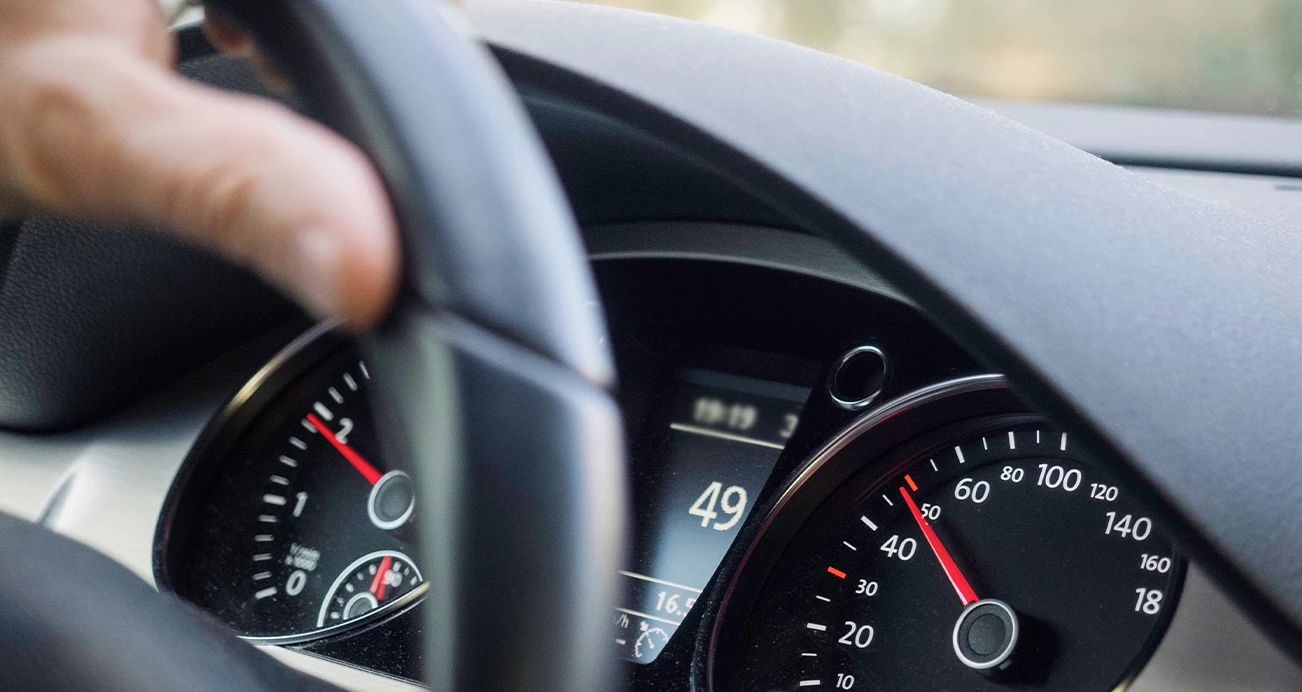
So now you're moving. But you can't stay in first gear forever. Soon you'll need to shift up to second gear, third gear, and so on.
Remember your tachometer. When you're in gear with a manual transmission, your throttle pedal is really controlling the speed of the engine—speed on the road is just a byproduct. When the tachometer shows the rpm getting higher, it means the engine speed is increasing and it's time to shift to the next higher gear. That will open up a new set of available rpm, allowing you to go faster. Think of each gear as unlocking a new level of speed on the road.
As you're driving, repeat the same throttle/clutch motion when you started moving the car. Only this time, move the stick to another gear. For most transmissions, you'll pull down on the stick to move from first to second, and push up and slightly to the right from second to third, directly back down for fourth, and so on. Moving the transmission to a higher gear is called upshifting. When you're already rolling, you'll find that it's much easier to operate the clutch and upshift. Just remember: Clutch in, change gears, clutch out.
Ryan's tip: Again, this is all practice. Want to know what helped me? I thought of all the people I knew who drove stick and figured that if they could figure it out, I probably could too. That helped me gain the confidence to first try, and then to not give up when I made a mistake. Everybody stalls, or misses a gear, or makes a mistake when learning to drive stick. The key is to keep trying because before long it becomes natural, and then it becomes fun. Lots of fun.
Stopping, turning, and parking a manual transmission vehicle
Say you're coming up to a red light and you need to slow down. Just step on the brake and the car will slow down. However, the engine will stall if the engine's rpm drops too much, so remember to press on the clutch before you come to a full stop, allowing the car to safely idle while you wait for a green light. For beginners, it's a good idea to press the clutch at the same time you press on the brake. Once you're fully stopped, you can simply put the car in neutral while you wait and take your foot off the clutch entirely. This will help extend the life of your clutch.
If you're slowing down to make a turn, you may not need to come to a full stop. In that case, press the clutch and brake together in order to make the turn. Next, as you prepare to speed up again, you can move the shifter into whichever gear is best for the situation. For instance, if you're approaching the intersection in fifth gear, you can press the clutch and brake, and select third gear when you're ready to accelerate. Selecting a lower gear is called downshifting. Once you're in gear again, let off the clutch and press the throttle.
When you reach your destination, roll into your parking spot and press the clutch and brake to stop. Keep them both pressed, then move the shifter into the neutral position and set the parking brake to hold the vehicle in place. Now you can release both the clutch and the brake. The car will continue running yet stay where it is. Now it's safe to turn off the vehicle and exit. Congrats!
Ryan's tip: There's something so intensely satisfying about interacting directly with a machine. You're telling the vehicle exactly what to do, even before the moment you turn it on. With an automatic, the car reads what you're doing and reacts appropriately. But with a manual, you tell the car how to act. You hold all the control in your two hands and two feet. If you're cruising along you can shift one gear up and go into super fuel-saver mode, or you can drop a gear or two and tap into the power for a quick burst around traffic. It's up to you! Like a good golf swing, it only takes one memorable moment to keep you coming back. Every manual driver knows the feeling.
Conclusion

There are a number of benefits to knowing how to drive a manual transmission. First, it opens up your shopping choices. You can search for a wider number of vehicles, and you can consider certain models that may be in better condition or closer proximity. Maybe there's a performance car you've always wanted that only comes with a manual. Or maybe there's a quirky vehicle that's a perfect fit for your personality, but you need to be able to change your own gears.
Second, knowing how to drive a stick just feels good. It's loads of fun to row through the gears, and as manufacturers continue to phase them out of production, you'll own something that gets progressively rarer and more distinctive over time. You can also pass down this knowledge to others, sharing the joy of driving a manual with your friends and maybe even your children. That possibility is almost worth the price of admission, all by itself.
Now get out there and practice!
